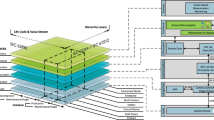Abstract
With the success of the applicability of Artificial Intelligence and Machine Learning (AI/ML), approaches in the field of computer vision has been highlighted, such as the recognition of objects and their intrinsic details. Within the manufacturing sector, especially in the automotive industry, there has been a motivation for urgent innovations and implementations of computer vision systems to control the assembly of the parts and their visual quality lately, in order to replace old equipment, such as cameras and scanners that have carried out this very limited verification until today, as well as the software license costs. Although there are multiple suppliers of this type of software on the market, it’s important to explore alternatives to reduce this expensive hardware and software license cost that comes with this innovation predicted by the Industry 4.0 global scope. In this sense, using AI/ML approaches for computer vision, in this work, we propose a cheaper method to explore and implement object detection applications in the assembly lines, as well as their particularities and characteristics, calculating distances between components and managing other visual quality elements, built on top of the YOLO architecture, one of the biggest and leading algorithms if the computer vision field. Promising results have been achieved in real scenarios, namely in the detection of the bag ear, plastic and metal clip, tapes and oeticker detection and measurements and in smart area inference simulations.
Access this chapter
Tax calculation will be finalised at checkout
Purchases are for personal use only
Similar content being viewed by others
References
Bai, C., et al.: Industry 4.0 technologies assessment: a sustainability perspective. J. Prod. 229 (2020). https://doi.org/10.1016/j.ijpe.2020.107776
Philbeck, T., Davis, N.: The fourth industrial revolution. J. Int. Affairs 72, 17 (2018). https://api.semanticscholar.org/CorpusID:198627085
Jiju, A., et al.: Industry 4.0 benefits, challenges and critical success factors: a comparative analysis. J. Manufact. Technol. (2023). https://doi.org/10.1108/jmtm-10-2022-0371
Shanahan, J., Liang, D.: Introduction to computer vision and real time deep learning-based object detection. Conf. on KDD (2020). https://doi.org/10.1145/3394486.3406713
Prijs, J., Liao, Z., Ashkani-Esfahani, S., et al.: Artificial intelligence and computer vision in orthopaedic trauma (2022). https://doi.org/10.1302/0301-620X.104B8.BJJ-2022-0119.R1
Pulli, K., Baksheev, A., Kornyakov, K., Eruhimov, V.: Real-time computer vision with OpenCV. Comm. ACM 55, 61–69 (2012). https://doi.org/10.1145/2184319.2184337
Orhei, C., et al.: End-to-end computer vision framework: an open-source platform for research and education. Sen. J. (2021). https://doi.org/10.3390/S21113691
Zhou, L., Zhang, L., Konz, N.: Computer vision techniques in manufacturing. IEEE Trans. Syst. 53, 105–117 (2023). https://doi.org/10.1109/TSMC.2022.3166397
Shetty, S., et al.: Computer vision for industrial safety and productivity. International Conference on Communication System, pp. 117–120 (2023). https://doi.org/10.1109/CSCITA55725.2023.10104764
Singh, S.A., et al.: Vision-sensor fusion-based low-cost dimension measurement system for machining shop floor, vol. 1 (2022). https://doi.org/10.1115/msec2022-85442
Lijuan, L., Wang, Y., Wanle, C.: Image recognition technology based on machine learning. IEEE Access (2020). https://doi.org/10.1109/ACCESS.2020.3021590
Wichmann, F.A., Geirhos, R.: Are deep neural networks adequate behavioral models of human visual perception? (2023). https://doi.org/10.1146/annurev-vision-120522-031739
Luo, J., et al.: A survey of computer vision technologies in urban and controlled-environment agriculture. ACM Comput. Surv. 56, 5, Article 118 (2024). https://doi.org/10.1145/3626186
Boltov, Y. et al.: A comparative analysis of deep learning-based object detectors for embedded systems (2023). https://doi.org/10.1109/IDAACS58523.2023.10348642
Anoopa, S., Salim, A., nadera Beevi, S.: Comparison of Faster RCNN and YOLO V3 for Video Anomaly Localization (2023). https://doi.org/10.1109/PICC57976.2023.10142815
Yuanduo et al., H.: ResDNet: efficient dense multi-scale representations with residual learning for high-level vision tasks. IEEE Trans. Neural Netw. Learn. Syst. (2022). https://doi.org/10.1109/TNNLS.2022.3169779
Fariba, L., et al.: Image data augmentation and convolutional feature map visualizations in computer vision applications (2023). https://doi.org/10.1007/978-3-031-26507-5_2
Nanthini, K., et al.: A survey on data augmentation techniques. In: International Conference on Computing Methodologies, pp. 913–920 (2023). https://doi.org/10.1109/ICCMC56507.2023.10084010
Faltings, U., et al.: Impact on inference model performance for ML tasks using real-life training data and synthetic training data from GANs (2022). https://doi.org/10.3390/info13010009
Dai, X., Zhao, X., Cen, F., Zhu, F.: Data augmentation using mixup and random erasing. In: International Conference on Networking, pp. 1–6 (2022). https://doi.org/10.1109/ICNSC55942.2022.10004083
Mao, X., et al: Programmable logic controllers past linear temporal logic for monitoring applications in industrial control systems (2022). https://doi.org/10.1109/TII.2021.3123194
Vajgl, M., Hurtik, P., Nejezchleba, T.: Dist-YOLO: fast object detection with distance estimation. Appl. Sci. 12(3), 1354 (2022). https://doi.org/10.3390/app12031354
Rubio-Manrique, S., et al.: PyPLC, a versatile plc-to-pc python interface (2014). https://api.semanticscholar.org/CorpusID:54502090
Author information
Authors and Affiliations
Corresponding author
Editor information
Editors and Affiliations
Rights and permissions
Copyright information
© 2025 The Author(s), under exclusive license to Springer Nature Switzerland AG
About this paper
Cite this paper
Rodrigues, J., Ribeiro, J. (2025). Exploration of Computer Vision Systems in the Recognition of Characteristics in Parts in an Industrial Environment. In: Santos, M.F., Machado, J., Novais, P., Cortez, P., Moreira, P.M. (eds) Progress in Artificial Intelligence. EPIA 2024. Lecture Notes in Computer Science(), vol 14967. Springer, Cham. https://doi.org/10.1007/978-3-031-73497-7_28
Download citation
DOI: https://doi.org/10.1007/978-3-031-73497-7_28
Published:
Publisher Name: Springer, Cham
Print ISBN: 978-3-031-73496-0
Online ISBN: 978-3-031-73497-7
eBook Packages: Computer ScienceComputer Science (R0)




